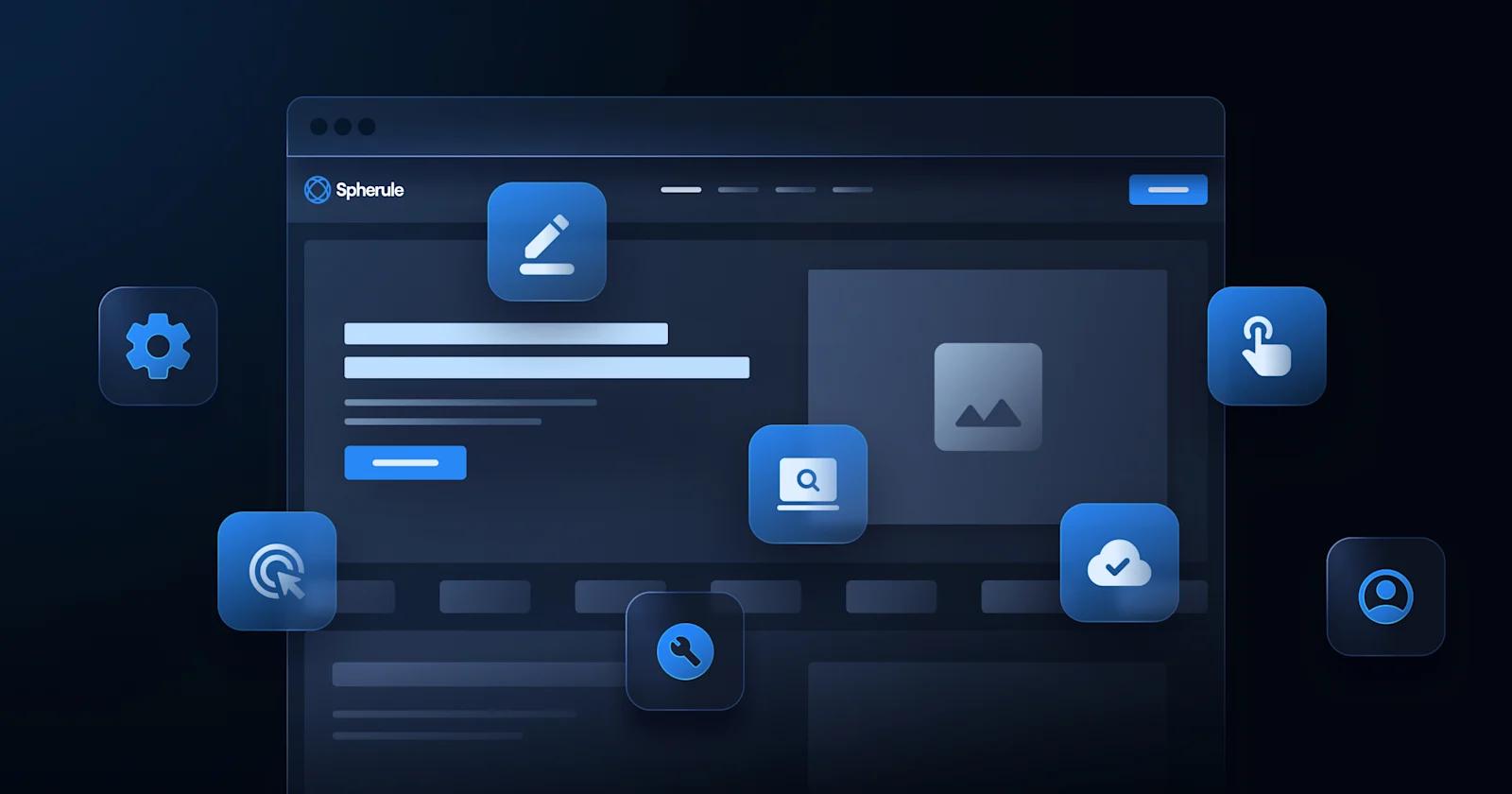If you aim to build a successful website, you shouldn’t ignore the interplay between conversion rate optimization (CRO) and user experience (UX). Both digital marketing activities are crucial for adjusting your website to be engaging and effective.
By analyzing your website’s performance data, you can determine how users interact with your site. Then, you can perform a CRO audit to fix where your website is falling short.
Luckily, CRO marketing and UX don’t have to be difficult. This guide will explain how CRO and UX design work together and 10 design elements you should test.
Understanding the User Journey
Before diving into the specific design elements that should be tested, it is important to understand the user journey on a website.
The user journey refers to the path that a visitor takes from the moment they land on the website to the moment they complete the desired action. Mapping out the user journey helps identify potential pain points and areas for optimization.
By understanding how users navigate through the website, businesses can make informed decisions about which design elements to test and optimize. It is important to consider factors such as the website's layout, navigation, visual hierarchy, and content placement to create a seamless user experience that guides users towards conversion.

What is the Difference Between CRO and UX?

CRO vs. UX
When it comes to designing a website that converts visitors into customers, two key factors are at play: CRO and UX
While they are closely related, they serve different purposes in boosting website performance.
CRO focuses on increasing the percentage of visitors who take a desired action, such as making a purchase or filling out a form. It involves analyzing data and conducting experiments to understand user behavior and optimize the website.
On the other hand, UX design is about creating a seamless and enjoyable experience for users, ensuring that they can navigate the website easily and find what they need.
How to Improve CRO with UX Design

Design’s Role in Conversion Rate Optimization
One of the most effective techniques for enhancing CRO with UX Design is through A/B testing. A/B testing involves creating two or more versions of a webpage or interface element and randomly assigning users to each variant.
By measuring the performance of each variant against a specific goal, such as click-through rates or conversion rates, you can identify which design or content changes have the most significant impact on user behavior.
To conduct an A/B test, start by identifying the elements you want to test, such as the headline, CTA button color, or layout. Create multiple variations of each element and assign them randomly to users. An analytics tool is used to track the performance of each variant and compare the results to determine which design or content changes have the most significant impact on user behavior.
Another way to revamp CRO through UX Design is user testing. User testing involves observing users as they interact with your website or application and collecting their feedback.
By watching users navigate through your site, you can gain valuable insights into what is working well and what can be refined. User testing can help identify usability issues, uncover confusing navigation paths, and highlight areas where users may abandon the conversion process.
During the user testing process, it is important to ask participants specific questions about their experience. Ask them to verbalize their thoughts as they complete tasks and encourage them to provide honest feedback.
Listening to users' comments and observing their behavior can yield valuable insights for tweaking a website's design and usability, leading to higher conversion rates.
Most Important Pages for CRO

Most Important Pages for CRO
When conducting a CRO audit, you should prioritize testing on high-value pages.
Homepage
Your homepage is the first impression visitors have of your website, so it's crucial to make it count. A well-designed homepage should immediately grab the attention of visitors and convey the value of your products or services.
To optimize your homepage for CRO, analyze metrics such as bounce rate, time on page, and events per session. Experiment with different layouts, headlines, and copy to find what resonates best with your target audience.
Pricing Page
The pricing page is a critical step in the customer's journey, as it is where they evaluate the cost of your offerings. Experiment with the layout of pricing tiers, highlighted features, and call-to-action (CTA) buttons to find the optimal combination that drives conversions.
Test different pricing strategies, such as offering discounts or free trials, to incentivize users to take the next step.
Contact Page
The contact page is where highly interested users can reach out to you for further information or inquiries. Test variations of compelling copy and different form designs to encourage users to take action.
Ensure the form is easy to fill out and provides clear instructions on the required information. Consider adding trust signals, such as customer testimonials or security badges, to instill confidence in users.
Landing Pages
Landing pages are designed to capture leads or drive specific actions, such as product sign-ups or webinar registrations. Experiment with different form layouts and design elements to optimize conversion rates.
Minor differences in design, such as the position of the form or the color of the CTA button, can have a significant impact on conversion rates. Test different variations to find what works best for your target audience.
Blog
Your blog is a valuable asset for capturing contact information from visitors interested in your content. Include clear and compelling CTAs for newsletter subscriptions or accessing downloadable resources related to your blog posts. Test different placements and designs of these CTAs to maximize conversions. Remember to provide value to your readers through informative and engaging content.
Key Design Elements to Test for CRO

Key Design Elements to Test for CRO
To improve CRO, it's essential to test and optimize specific design elements on your website. Here are ten key design elements you should test:
1. Call-to-Action (CTA) 📣
Experiment with different aspects of your CTAs, such as button size, color, text, and placement. Test different wording and urgency to see what drives the most conversions.
2. Headline and Copy 📰
Test different value propositions, tones of voice, and lengths of text to find what resonates best with your audience. A compelling headline and persuasive copy can significantly impact conversion rates.
3. Typography 🔠
Experiment with different font styles, sizes, and colors to find the optimal combination that enhances readability and captures attention.
4. Color Schemes 🎨
Test different color schemes, including background colors, complimentary colors, and typography colors. Small changes in color can have a big impact on user perception and conversion rates.
5. Visual Media 📹
Experiment with different types of visual media, such as images, graphics, videos, and animations. Test whether sliders or static images work better for your audience.
6. Page Layout 📄
Optimize the above-the-fold section, the arrangement of content, and the position of forms to increase user engagement and conversion rates.
7. Form Design 📝
Test different form layouts, the number of fields, and the type of information required. Consider using placeholder text instead of labels and make the form design intuitive and user-friendly.
8. Social Proof / Trust Signals 🤝
Include social proof elements such as company logos, testimonials, reviews, and trust badges to build trust and credibility with your audience.
9. Microinteractions 👈
Test different microinteractions, such as hover effects, button press animations, scrolling feedback, and toggles or sliders. These small design details can enhance the overall user experience and drive conversions.
10. Personalization 👤
Consider personalizing various elements of your website to better address the specific needs, preferences, and behaviors of individual users. Test personalized CTAs, messaging, and images to see if they improve conversion rates.
Other Design Elements That Can Indirectly Impact CRO
In addition to the key design elements mentioned above, there are other factors that can indirectly impact CRO:
- Loading speeds: Ensure that your pages and elements load quickly to avoid user frustration and abandonment.
- Responsive design: Make sure your design is visually appealing and functional across various screen sizes and devices.
- Brand consistency: Maintain consistent branding and messaging throughout your entire website to build trust and recognition.
- Accessibility: Ensure that your content is inclusive and user-friendly, especially for users with disabilities.
- Information architecture: Create an intuitive navigation menu and use clear naming conventions for pages and sections to improve user flow.
- Customer journey mapping: Define clear user paths that lead to conversion points to guide users through the buying process.
Tools and Resources for CRO and UX Testing
To effectively test and optimize your website for CRO and UX Design, various tools and resources are available:
- Google Analytics: Provides valuable insights into user behavior, conversion rates, and website performance.
- Hotjar: Allows you to visualize user behavior through heatmaps, recordings, and surveys.
- Mutiny: Personalizes your website elements and experiences for different segments of their audience.
- Fullstory: Captures and analyzes user interactions to help businesses understand, quantify, and improve the user experience.
- Optimizely: Enables you to test different design elements and measure their impact on conversions.
- Heap: Collects and organizes user actions to conduct comprehensive data analysis without prior event tracking configuration.

Need Help with CRO and UX?
Designing a website for optimal conversion rates requires a strategic approach that combines CRO and UX design.
By testing and optimizing key design elements, such as CTAs, headlines, typography, and visual media, you can enhance the user experience and increase the chances of converting visitors into customers.
If you want to see CRO and UX working in tandem, check out these B2B SaaS redesign examples.




